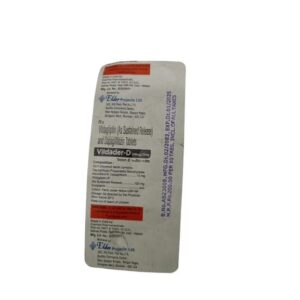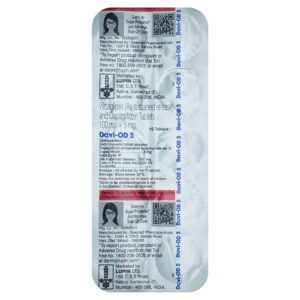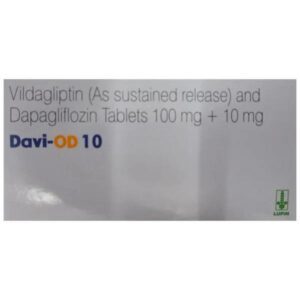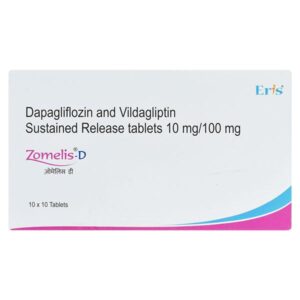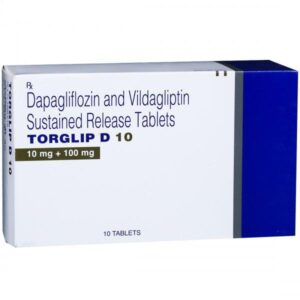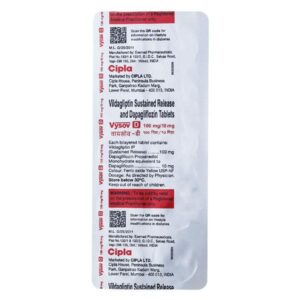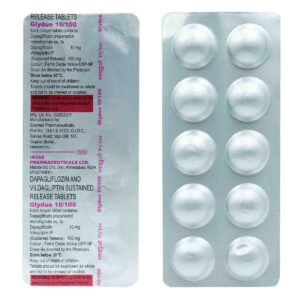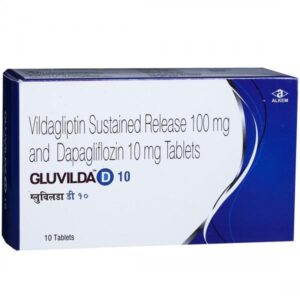VILDAGLIPTIN + DAPAGLIFLOZIN
Vildagliptin: Vildagliptin is an oral anti-diabetic medication that belongs to the class of drugs known as dipeptidyl peptidase-4 (DPP-4) inhibitors. It is primarily used in the treatment of type 2 diabetes mellitus.
The main mechanism of action of Vildagliptin is to inhibit the enzyme DPP-4, which is responsible for the breakdown of incretin hormones, such as glucagon-like peptide-1 (GLP-1) and glucose-dependent insulinotropic polypeptide (GIP). By inhibiting the activity of DPP-4, Vildagliptin increases the levels of these hormones, leading to increased insulin secretion and decreased glucagon release. This helps to lower blood glucose levels and improve glycemic control in patients with type 2 diabetes.
The usual recommended dose of Vildagliptin is 50 mg taken orally, twice daily, before meals. However, the dosage may vary depending on individual patient characteristics and should be determined by a healthcare professional.
Like all medications, Vildagliptin may cause some side effects. The common side effects include headache, dizziness, nasopharyngitis (inflammation of the nose and throat), upper respiratory tract infections, sore throat, and gastrointestinal symptoms such as nausea, diarrhea, and abdominal pain. In rare cases, severe allergic reactions may occur, characterized by rash, itching, swelling, or difficulty breathing. It is essential to notify a healthcare professional if any of these side effects persist or worsen.
Additionally, Vildagliptin has a low risk of causing hypoglycemia (low blood sugar levels) when taken alone. However, when used in combination with other anti-diabetic medications such as sulfonylureas or insulin, the risk of hypoglycemia may increase.
As with any medication, it is crucial to follow the prescribed dosage and inform your healthcare provider about any existing medical conditions or medications you are taking to avoid potential interactions or complications.
Dapagliflozin: Dapagliflozin is a medication used to treat type 2 diabetes. It belongs to a class of drugs called sodium-glucose co-transporter 2 (SGLT2) inhibitors.
The main mechanism of action of dapagliflozin is by blocking the SGLT2 protein in the kidneys. This protein is responsible for reabsorbing glucose from the urine back into the bloodstream. By inhibiting this protein, dapagliflozin decreases the reabsorption of glucose, which leads to increased glucose excretion in the urine and lower blood sugar levels.
The usual recommended dose of dapagliflozin is 5 mg once daily, taken orally. It can be taken with or without food. However, the dosage may be adjusted based on individual response and the presence of other medical conditions.
Some common side effects of dapagliflozin include urinary tract infections, genital fungal infections (such as yeast infections or balanitis), increased urination, thirst, low blood pressure, and increased cholesterol levels. In rare cases, serious side effects like ketoacidosis (a life-threatening condition) and kidney problems may occur. It is important to seek medical attention if any severe or persistent side effects are experienced.
As with any medication, dapagliflozin may interact with other drugs. It is recommended to inform healthcare providers about all current medications (prescription and over-the-counter) and any medical conditions before starting dapagliflozin to prevent potential interactions and complications.
Overall, dapagliflozin is an effective medication for managing blood sugar levels in patients with type 2 diabetes. However, it is essential to follow the dosage instructions, monitor blood sugar levels regularly, and report any concerning side effects to a healthcare provider.

